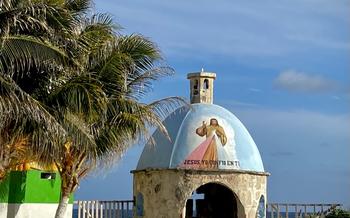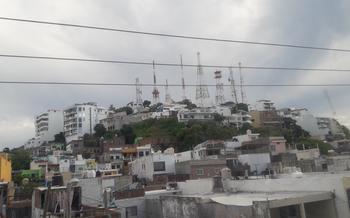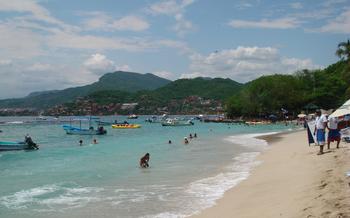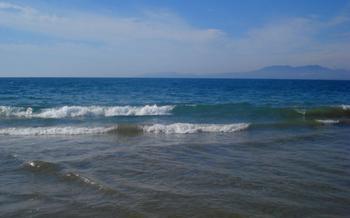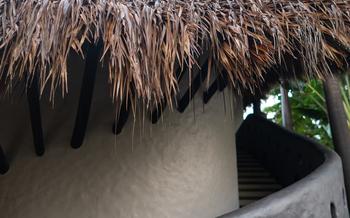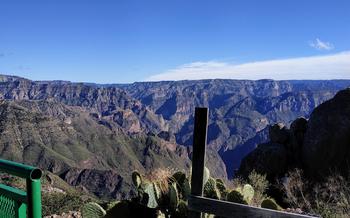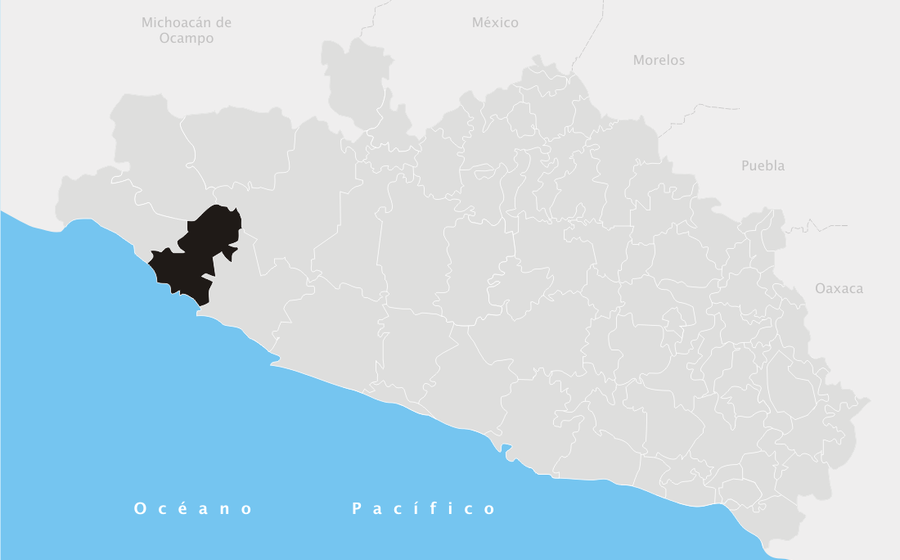
Birdwatching in the Mangroves of Barra de Potosi
- How to Get to Barra de Potosi
- Best Time to Visit
- What to Bring:
- What to Expect:
- Where to Stay
- Guided Tours:
- Birdwatching Tips
- Other Activities in Barra de Potosi
- Safety Tips
- Solo Travelers:
- Budget Tips:
- Family Travel:
- Insider Tip:
How to Get to Barra de Potosi
Getting to Barra de Potosi from Zihuatanejo is a breeze. Those with their own set of wheels can embark on a scenic 45-minute drive along the coastal highway, which offers breathtaking ocean views and glimpses of the lush vegetation that lines the route. The drive is straightforward, primarily following a single road that leads directly to Barra de Potosi, making it difficult to get lost.
For those relying on public transportation, there are several options available. Regular buses depart from Zihuatanejo's main bus station, offering a budget-friendly mode of transport. The journey takes approximately an hour, providing an opportunity to soak in the passing scenery and interact with locals. Alternatively, taxis are readily available and offer a more direct and customizable route, albeit at a slightly higher cost. The fare typically ranges from 30 to 40 USD, depending on the time of day and negotiation skills.
Best Time to Visit
The best time to visit Barra de Potosi for birdwatching is during the migratory bird season, which runs from October to April. During this time, thousands of birds from North America and Canada flock to the mangroves to escape the cold winter weather. The peak season for birdwatching is from January to March, when the mangroves are teeming with activity.
The weather in Barra de Potosi is pleasant year-round, with warm and sunny days and cool nights. However, the rainy season runs from June to October, and during this time the mangroves can be flooded, making it difficult to access some areas.
Crowds and tourism are relatively low in Barra de Potosi, even during the peak season. This makes it a great destination for those who want to escape the hustle and bustle of more popular tourist destinations. However, it is important to note that some of the trails in the mangroves can be narrow and muddy, so it is important to be prepared for a bit of a hike.
If you want to avoid the crowds, try to visit during the shoulder season (May-June and September-October). During this time, the weather is still good for birdwatching, but there are fewer tourists around.
What to Bring:
Birdwatching in the mangroves requires specific gear and preparation to ensure a successful and enjoyable experience. Essential birdwatching gear includes binoculars, a field guide to identify bird species, and a camera with a telephoto lens for capturing stunning shots. Dress comfortably and appropriately for the humid and buggy environment of the mangroves. Long-sleeved shirts, pants, and closed-toe shoes are recommended to protect against insects and thorns.
Sun protection is crucial, so bring a hat, sunglasses, and sunscreen to shield yourself from the intense Mexican sun. Insect repellent is also essential to keep mosquitoes and other insects at bay. Stay hydrated by bringing plenty of water, as there are limited facilities for purchasing drinks in the mangroves. Pack snacks and energy bars to keep your energy levels up during your birdwatching adventure.
What to Expect:
Bird lovers are in for a treat in the mangroves of Barra de Potosi. The variety of bird species that call this unique ecosystem home is truly impressive. From the colorful and charismatic Rufous-capped Warbler to the elusive Mangrove Warbler, there is a bird for every enthusiast to spot and admire. Keep an eye out for the majestic Ospreys soaring overhead, and don't miss the chance to witness the graceful ballet of the Roseate Spoonbills as they feed in the shallow waters.
In addition to the feathered wonders, the mangroves are also home to a variety of other wildlife. The intricate root systems provide a haven for crabs, shrimp, and other small creatures that serve as a vital food source for the birds. You might also catch a glimpse of playful raccoons scampering through the trees or the shy opossum peeking out from its hiding place.
The scenery and landscapes of the mangroves are equally captivating. The towering trees, with their intricate root systems reaching into the water, create a surreal and enchanting atmosphere. The gentle lapping of the waves against the shore and the rustling of the leaves in the breeze add to the serene ambiance of this natural paradise.
While the walk through the mangroves is relatively easy, it does require a certain level of physical fitness. The terrain can be uneven, and there are a few sections where you might need to cross small streams or muddy patches. However, the beauty of the surroundings and the excitement of spotting new bird species will make any effort worthwhile.
Where to Stay
Barra de Potosi offers a range of accommodation options to suit different budgets and preferences. From cozy guesthouses to luxurious beachfront resorts, there's something for everyone. For those seeking a rustic experience, there are several eco-lodges located within the mangroves, providing a unique opportunity to immerse yourself in nature.
If you're on a tight budget, there are several hostels and budget hotels available, offering basic but comfortable rooms at affordable rates. Mid-range options include charming bed and breakfasts and small hotels, providing a more personalized experience with amenities like private bathrooms and air conditioning.
For those looking for a truly indulgent stay, there are several high-end resorts that offer luxurious accommodations, world-class amenities, and stunning views of the mangroves and the ocean. These resorts often feature private pools, spas, and fine dining restaurants.
No matter your budget or preferences, you're sure to find a comfortable and welcoming place to stay in Barra de Potosi. Be sure to book your accommodation in advance, especially during the peak season, to avoid any disappointment.
Guided Tours:
Hiring a local guide can greatly enhance your birdwatching experience in the mangroves of Barra de Potosi. An experienced guide knows the best spots for birdwatching, can help you identify different bird species, and can provide valuable insights into the local ecosystem.
The cost of guided tours varies depending on the length of the tour, the number of participants, and the level of expertise of the guide. On average, you can expect to pay anywhere from $50 to $150 for a guided birdwatching tour in the mangroves.
When choosing a guide, look for someone who is knowledgeable, experienced, and passionate about birdwatching. Make sure the guide is also licensed and insured. You can ask your hotel or hostel for recommendations or search online for reputable tour operators in the area.
To book a guided tour, contact the tour operator directly or book online. Be sure to inquire about the tour itinerary, the level of difficulty, and the cost of the tour before making a reservation.
Birdwatching Tips
Birdwatching requires a combination of patience, skill, and knowledge. To make the most of your experience in the mangroves, here are a few tips to help you spot and identify birds:
-
Be quiet and still. Birds are easily spooked by noise and movement, so it's important to be as quiet and still as possible while you're birdwatching.
-
Use binoculars and/or a spotting scope. These tools will help you get a closer look at birds and identify their distinctive features.
-
Pay attention to the bird's behavior. Birds communicate through their calls, songs, and body language. By paying attention to these cues, you can learn a lot about the birds you're seeing.
-
Keep a field guide handy. A field guide can help you identify the different species of birds you see, as well as provide information about their habits and habitats.
-
Be respectful of the birds and their environment. Always follow the principles of ethical birding, which include avoiding disturbing the birds, their nests, or their habitat.
-
Take your time and enjoy the experience. Birdwatching is a relaxing and rewarding activity. Take your time, soak in the beauty of the mangroves, and enjoy the challenge of spotting and identifying as many birds as you can.
Other Activities in Barra de Potosi
In addition to birdwatching, Barra de Potosi offers a variety of other activities for visitors to enjoy. Kayaking and boat tours are popular ways to explore the mangroves and get up close to the wildlife. Several hiking and nature trails wind through the forest, offering opportunities for birdwatching, wildlife spotting, and enjoying the scenery.
For those interested in learning more about the local culture, there are several historical sites and cultural attractions in the area. Visitors can explore the ruins of an ancient Mayan temple, visit a local museum, or shop for souvenirs at the bustling market.
Barra de Potosi is a great place to find unique and locally-made souvenirs. Visitors can find everything from hand-woven textiles and pottery to colorful paintings and sculptures. Be sure to haggle with the vendors to get the best price.
Whether you're interested in birdwatching, kayaking, hiking, or simply relaxing on the beach, Barra de Potosi has something to offer everyone. So come explore this beautiful and diverse destination and create memories that will last a lifetime.
Safety Tips
Barra de Potosi is a generally safe destination, but it's important to exercise caution and common sense, as you would in any unfamiliar place. Here are some safety tips to keep in mind:
-
General safety precautions: Avoid walking alone at night, especially in isolated areas. Be aware of your surroundings and keep an eye on your belongings.
-
Avoiding theft and scams: Be wary of pickpockets and petty theft, particularly in crowded areas. Don't carry large amounts of cash, and be careful when using ATMs. Be skeptical of unsolicited offers and deals, especially from street vendors.
-
Wildlife encounters: While the wildlife in the mangroves is generally harmless, it's important to maintain a respectful distance and avoid disturbing the animals. Be cautious around crocodiles, which can be found in the area.
-
Emergency contact information: Keep the contact information of your hotel, tour operator, or local authorities handy in case of an emergency.
Solo Travelers:
Birdwatching in the mangroves of Barra de Potosi is a rewarding experience for solo travelers. The friendly locals and laid-back atmosphere make it easy to meet new people and make friends. Joining a guided tour is an excellent way to connect with other nature enthusiasts and learn more about the local birdlife. Several hostels and guesthouses in Zihuatanejo cater to solo travelers, providing a social environment and opportunities to meet fellow adventurers. Remember to take necessary safety precautions, such as informing someone about your itinerary and avoiding walking alone at night. Embrace the opportunity to explore the mangroves independently, immersing yourself in the tranquility and beauty of nature.
Budget Tips:
Birdwatching in the mangroves of Barra de Potosi can be a budget-friendly activity. Here are some tips to help you save money:
- Opt for budget-friendly accommodation options such as hostels, guesthouses, or budget hotels.
- Look for discounts and special offers on tours and activities.
- Take advantage of free activities such as hiking, swimming, and sunbathing.
- Bring your own snacks and drinks to avoid spending money on food and beverages.
- Cook your own meals if possible to save money on dining out.
- Consider traveling during the off-season to avoid high prices and crowds.
- Ask locals for tips on finding the best deals and hidden gems.
- Take advantage of group discounts or package deals when booking tours or activities.
- Consider renting a bicycle or walking instead of taking taxis or other forms of transportation.
Family Travel:
Birdwatching in the mangroves of Barra de Potosi is a great activity for families with kids. The diverse birdlife and the beautiful scenery make it an educational and enjoyable experience for everyone. Here are some tips for traveling with kids:
-
Start early: The best time to go birdwatching is in the morning when the birds are most active. This is also a good time to avoid the heat and crowds.
-
Bring binoculars and field guides: Binoculars will help you get a closer look at the birds, and field guides will help you identify them.
-
Make it fun: Kids are more likely to enjoy birdwatching if they are having fun. Play games, such as bird bingo or I-spy, to keep them engaged.
-
Take breaks: Birdwatching can be tiring for kids, so take breaks to rest and eat snacks.
-
Be patient: It takes time and patience to spot and identify birds. Don't get discouraged if you don't see many birds right away.
-
Educational opportunities: Birdwatching is a great way to teach kids about the importance of conservation and the environment. Talk to them about the different birds you see and their habitats.
-
Pack snacks and drinks: There are no food or drink vendors in the mangroves, so bring your own snacks and drinks.
-
Keep kids entertained: Bring along books, games, or other activities to keep kids entertained while you are birdwatching.
Insider Tip:
Bird lovers in the know make a pilgrimage to Barra de Potosi to witness the breathtaking spectacle of the mangrove forest teeming with life. Venture beyond the beaten path and uncover the hidden gems that make this destination truly special. Kayak silently through the tranquil waters, allowing you to observe the mangrove ecosystem from a unique perspective. Take advantage of the opportunity to capture stunning photographs of the diverse bird species that call this place their home, ensuring you cherish these memories for a lifetime. Engage with local conservationists who are passionate about protecting this fragile habitat. Their insights will deepen your appreciation for the mangroves and the incredible biodiversity it supports. Embrace the spirit of ecotourism by supporting local businesses that prioritize sustainability, ensuring that future generations can continue to marvel at the wonders of Barra de Potosi.


